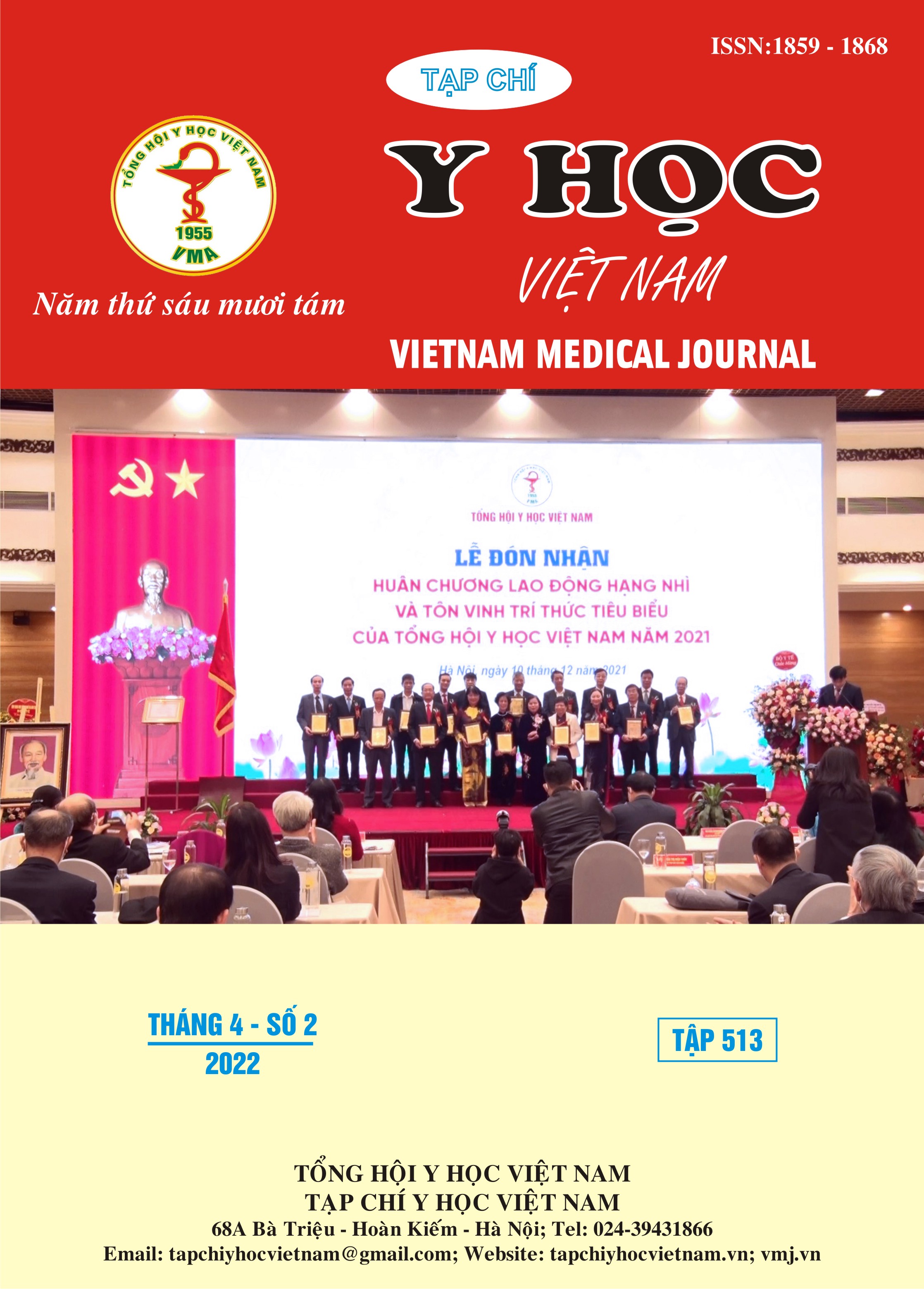TORG-PAVLOV INDEX ON RADIOGRAPH AND MAGNETIC RESONANCE IMAGING OF PATIENTS UNDERGOING SURGERY FOF MULTILEVEL CERVICAL SPONDYLOTIC MYELOPATHY AT BACH MAI HOSPITAL
Main Article Content
Abstract
Objective: Study to evaluate Torg-Pavlov index in patients undergoing surgery for multilever cervical spondylotic myelopathy and its relationship with cervical myelopathy preoperation and postoperation. Methods: A cross-sectional descriptive study included 30 consecutive patients who underwent surgical treatment for M-CSM from June, 2019 to Aug, 2021 at Orthopedic and Spine department, Bach Mai hospital. Results: Mean age 63.10 ± 9.82 years old, (from 39 - 79 years old), 19 male patients (63.3%), 11 female patients (36.7%). Male/Female ratio ≈ 2/1. The mean Torg-Pavlov index of C3-C6 and C3-C7 segments on radiographs was 0.74 ± 0.09, 0.74 ± 0.09 and on MRI respectively 0.76 ± 0.07, 0.77 ± 0.07. The average Torg-Pavlov index in patients < 60 years old, female tends to be higher than patients ≥ 60 years old, male. Patients with Torg-Pavlov index measured on X-ray ≥0.8 all had the mean values of mJOA preoperation, mJOA postoperation, recovery rate (RR) postoperation and follow-up greater than the group <0.8, however, the difference was not statistically significant with p>0.05. Conclusion: Torg-Pavlov index in patients undergoing surgery for multilevel cervical spondylotic myelopathy was lower than in normal Vietnamese. Torg-Pavlov index in patients < 60 years old, female tends to be higher than patients ≥60 years old, male.
Article Details
Keywords
Torg-Pavlov index, multilevel cervical spondylotic myelopathy, cervical degeneration
References
2. Kyung-Soo Suk, M.e.a., Reevaluation of the Pavlov Ratio in Patients with Cervical Myelopathy. Clinics in Orthopedic Surgery, 2009. 1(1): p. 6 -10.
3. Wai-Mun Yue, M., FRCS (Edin), et al, The Torg–Pavlov Ratio in Cervical Spondylotic Myelopathy. SPINE, 2001. 26(16): p. 1760 -1764.
4. Kyung-Jin Song, M., Byung-Wan Choi, MD. et al, The Relationship between Spinal Stenosis and Neurological Outcome in Traumatic Cervical Spine Injury: An Analysis using Pavlov’s Ratio, Spinal Cord Area, and Spinal Canal Area. Clinics in Orthopedic Surgery, 2009. 1(1): p. 11 -18.
5. Aria Nouri, M., MSc, Lindsay Tetreault, PhD. et al, Congenital Cervical Spine Stenosis in a Multicenter Global Cohort of Patients With Degenerative Cervical Myelopathy: An Ambispective Report Based on a Magnetic Resonance Imaging Diagnostic Criterion. Neurosurgery, 2017. 0(1): p. 1-8.
6. Lê Gia Vinh, T.N.A., Nguyễn Văn Chương, Nghiên cứu đường kính ống sống cổ và chỉ số Pavlov trên phim Xquang và phim cộng hưởng từ ở 40 người trưởng thành bình thường. Y học Việt Nam, 2004. 9: p. 37 - 40.
7. Hirabayashi, K. and K. Satomi, Operative procedure and results of expansive open-door laminoplasty. Spine (Phila Pa 1976), 1988. 13(7): p. 870-6.
8. Tetreault, L., et al., The modified Japanese Orthopaedic Association scale: establishing criteria for mild, moderate and severe impairment in patients with degenerative cervical myelopathy. Eur Spine J, 2017. 26(1): p. 78-84.
9. Aria Nouri, M., Lindsay Tetreault. et al, Degenerative Cervical Myelopathy. SPINE, 2015. 40(12): p. 675 - 693.


